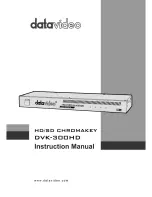
OptiFlow™ Vertical Power Stacker
SV61322 Rev. C
Getting the Most from Your Stacker
In most cases, the stacker will run and stack up to the maximum of
21 inches (the full length of a US Postal Mail Tray).
However, this may prove impractical for certain applications and con-
ditions.
We recommend that you adjust the stacker to 3/ heght (ap-
proxmately 16 nches) to start off
. This will provide most applications
with the best compromise between stack height and quality.
Some applications and operating conditions warrant a lower maxi-
mum stack height to ensure consistent stack quality in the event you
let the system run to maximum stack height. Should this arise, lower
the maximum stack height by 1 to 2 inches until best stack quality is
achieved.
Factors that affect maximum stack height include:
• Stack integrity (how neatly the envelopes align);
• Sealing quality (clean seals void of wrinkles or other imperfections);
• Outer envelope quality (no impressions or imperfections caused
by stacker components, guides, or the stack itself);
• Humidity and temperature extremes; and
• Poor materials, such as some recycled envelopes and materials
that have been improperly stored (not in a cool, dry place).
Keep the following in mind when you use the stacker:
• Standard practice is to unload on-the-fly, so that maximum stack
height is reached infrequently, if ever at all.
• In some cases, before the stack reaches the top of the stacker
wall, the stacker LED will blink red or green, indicating that it
needs to be emptied. This is a normal condition and simply
means that the stack is too heavy.
• Excessive wetting may cause flap distortion. To alleviate this
problem, use Pitney Bowes E-Z Seal
®
solution in the inserter's
sealing reservoir. You may also set the stacker wall to a lower
position and/or remove part of the stack while the job is running.










































